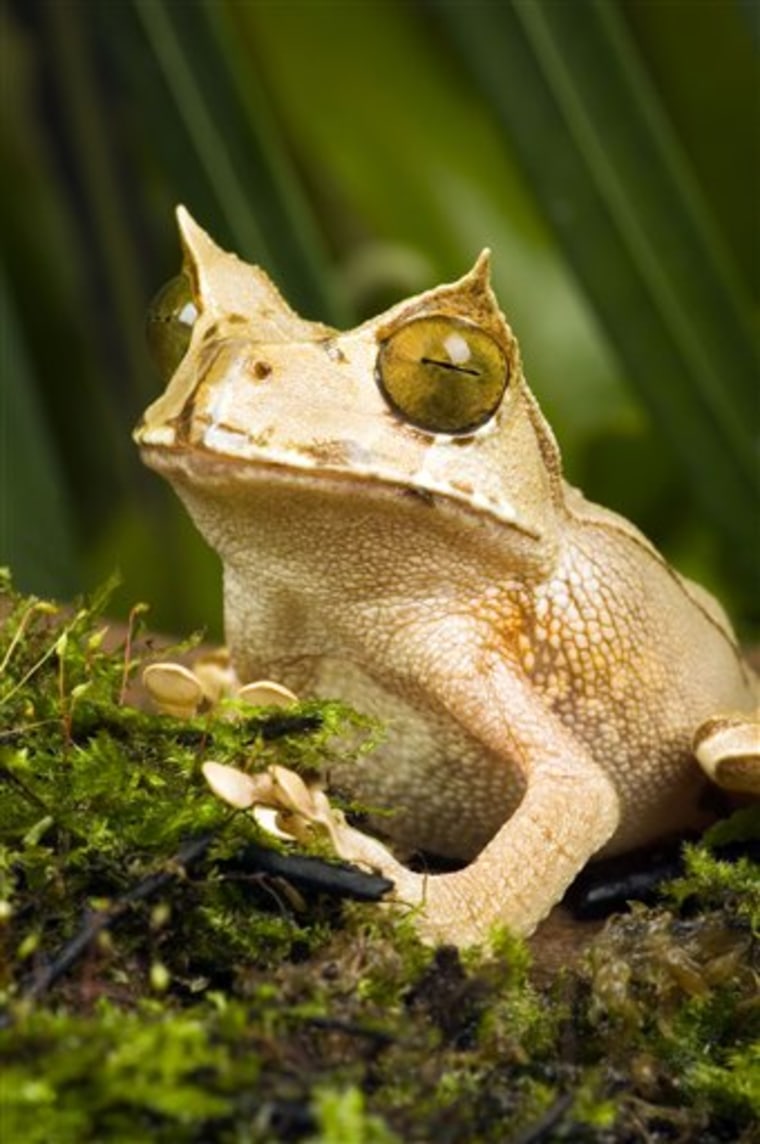Ponds and swamps are becoming eerily silent.
The familiar melody of ribbits, croaks and chirps is disappearing as a mysterious killer fungus wipes out frog populations around the globe, a phenomenon likened to the extinction of dinosaurs.
Scientists from around the world are meeting Thursday and Friday in Atlanta to organize a worldwide effort to stem the deaths by asking zoos, aquariums and botanical gardens to take in threatened frogs until the fungus can be stopped.
The aim of the group called Amphibian Ark is to prevent the world's more than 6,000 species of frogs, salamanders and wormlike sicilians from disappearing. Scientists estimate up to 170 species of frogs have become extinct in the past decade from the fungus and other causes, and an additional 1,900 species are threatened.
"This is the precedent of a disease working its way across an entire species on the scale of all mammals, all birds or all fish," said Joseph Mendelson, curator of herpetology at Zoo Atlanta and an organizer of Amphibian Ark. "Humans would be absolutely stupid if they didn't pay attention to that."
Amphibians — of which frogs make up the majority — are a vital part of the food chain, eating insects that other animals don't touch and connecting the world of aquatic animals to land dwellers. Without amphibians, the insects that would go unchecked would threaten public health and food supplies.
Amphibians also serve important biomedical purposes. Some species produce a chemical used as a pain reliever for humans; one species is linked to a chemical that disables the virus that causes AIDS.
Goal of 500 frogs
Amphibian Ark wants zoos, botanical gardens and aquariums in each country to take in at least 500 frogs from a threatened species to protect them from the killer fungus, which is called chytrid fungus. Each frog would get cleaned to make sure it doesn't introduce the scourge into the protected area.
The group estimates it will cost between $400 million and $500 million to complete the project. It is launching a fundraising campaign next year to create an endowment.
The scientists say the amphibian collection is simply a stopgap. It buys time and prevents more species from going extinct while researchers figure out how to keep amphibians from dying off in the wild.
The fungus isn't the only thing that's deadly to amphibians — it's just killing them faster than development, pollution and global warming, said George Rabb, the retired head of the Chicago's Brookfield Zoo and a leader in Amphibian Ark. Scientists will have to closely monitor frog populations rereleased into the wild once the fungus is eliminated, he said.

"Right now with global warming and the garbage heap we put in the atmosphere, there are going to be risks," said Rabb, one of the country's leading conservation scientists. "That's why we'll need people from other professional fields — epidemiology, climate change."
African origin?
Scientists aren't quite sure of the fungus's origin, but they suspect it might be Africa. The African clawed frog, which carries the fungus on its skin and is immune to its deadly effects, has been shipped all over the world for research.
The clawed frog was also used in hospitals in the 1940s as a way to detect pregnancy in women. It produces eggs when injected with the urine of a pregnant woman.
The fungus works like a parasite that makes it difficult for the frogs to use their pores, quickly causing them to die of dehydration. It has been linked to the extinction of amphibians from Australia to Costa Rica.
Last month, Japan reported its first cases of frog deaths from the fungus, prompting research groups to declare an emergency in the country. On the Caribbean island of Dominica, the fungus has almost wiped out the mountain chicken, a frog species considered an island delicacy.
At Yosemite National Park in California, the mountain yellow-legged frog is close to extinction. The park has only 650 frog populations left, but 85 percent are infected with the fungus and the growing quiet along the park's lakes is evident as many of the frogs are dying off.
